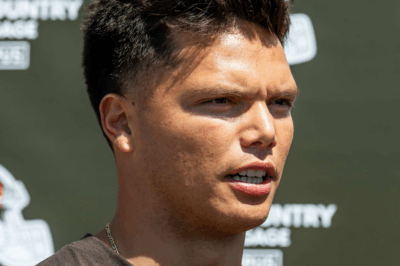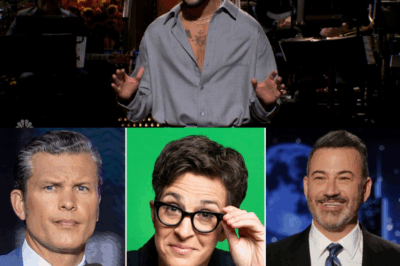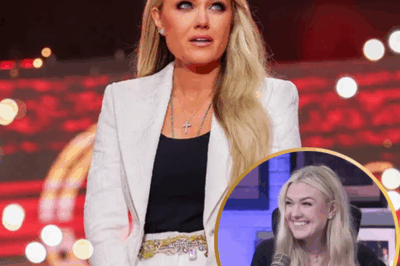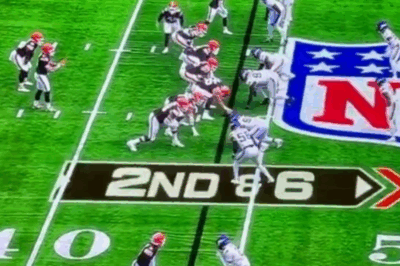The Spectacle of Sports and Celebrity: Analyzing Stephen A. Smith’s Hypothetical Take on Serena Williams’ Super Bowl Cameo
Introduction In the ever-intertwined worlds of sports and entertainment, the Super Bowl halftime show represents the pinnacle of crossover spectacle.
Every year, the performance generates as much buzz as the game itself, uniting athletes, musicians, and pop culture icons in a dazzling display of artistic and commercial power. However, what if a well-known sports personality like ESPN’s Stephen A. Smith took issue with a star athlete’s participation?
Specifically, what if he hypothetically declared that he would have divorced Serena Williams over a halftime show appearance? Such a claim, even in a speculative sense, would ignite discussions about gender dynamics in sports, the role of athletes beyond competition, and the evolving nature of celebrity in modern media. This essay explores these themes, dissecting how Smith’s theoretical stance reflects larger societal narratives and cultural tensions.
The Persona of Stephen A. Smith: A Polarizing Voice in Sports Media Stephen A. Smith has cemented his reputation as one of the most outspoken and polarizing figures in sports media. As the face of ESPN’s “First Take,” his opinions—often delivered with theatrical flair—shape national debates about sports, culture, and everything in between. His signature bombast, coupled with a tendency to engage in hyperbolic takes, makes him a fixture in discussions beyond the games themselves.
If Smith were to declare, even in jest, that he would divorce a hypothetical spouse like Serena Williams over her participation in a Super Bowl halftime cameo, his words would be received with a mix of amusement, outrage, and critical analysis. Given his history of making incendiary remarks—whether about players’ performances, coaching decisions, or off-field controversies—it would not be out of character for him to insert himself into a cultural moment like this. But beyond the shock value, such a statement would prompt deeper reflection on the ways in which sports media personalities navigate and influence cultural discourse.
Serena Williams: The Intersection of Sports and Cultural Influence Serena Williams is more than a tennis legend; she is a global icon whose influence extends into fashion, business, and activism. Over the years, she has transcended sports, embodying a brand that stands for excellence, empowerment, and cultural relevance. Given her stature, a Super Bowl halftime cameo would be entirely plausible—whether as a symbolic figure representing athletic greatness or as a performer embracing the entertainment world.
Historically, the Super Bowl halftime show has been a stage where sports figures occasionally make appearances. From Muhammad Ali standing alongside musicians to Michael Jordan appearing in commercials tied to halftime spectacles, the event often serves as a convergence of athletic and pop cultural fame. If Serena were to participate, it would align with her larger-than-life presence in the sports and entertainment landscape.

The idea that such an appearance would warrant a hypothetical “divorce” in the eyes of Stephen A. Smith raises intriguing questions. What does it suggest about how certain sports figures—or male commentators—perceive women athletes who venture beyond traditional sports boundaries? Would the same scrutiny be placed on a male athlete making a similar cameo? These questions speak to broader conversations about agency, respect, and the shifting expectations placed upon female athletes in the media space.
The Gendered Lens in Sports Criticism The sports industry has long grappled with gender biases that shape the way male and female athletes are discussed. Male athletes often receive praise for branching out into entertainment—think of LeBron James producing Hollywood projects or Shaquille O’Neal becoming a music and media personality. However, female athletes who engage in similar ventures frequently face additional scrutiny, as if their primary role as competitors must remain untainted by external pursuits.
A hypothetical Stephen A. Smith critique of Serena Williams’ Super Bowl cameo would likely expose this double standard. If a retired male athlete like Peyton Manning or Tom Brady were to participate in a similar halftime moment, it would be celebrated as a fun and charismatic extension of their public persona. However, if Serena were involved, detractors might frame it as a distraction from her athletic legacy or an unnecessary attempt to seek relevance outside of her sport. This imbalance reflects lingering biases that continue to shape sports media commentary.
The Role of the Super Bowl Halftime Show in Sports Culture The halftime show is no longer just an intermission between halves—it is a cultural phenomenon that often overshadows the game itself. The presence of a sports figure in the show serves as an acknowledgment of their cultural impact, reinforcing their standing as more than just athletes. Whether through symbolic cameos or direct performances, these appearances cement the reality that sports and entertainment are no longer separate entities but complementary forces driving modern media.
Given this backdrop, Serena Williams appearing in a Super Bowl halftime show would not be out of place—it would be a natural extension of her broader influence. Her participation would be an acknowledgment of her role in shaping sports and culture, akin to Michael Jordan’s presence in pop culture moments beyond basketball. Smith’s hypothetical disapproval, then, would reflect a narrow view of how athletes should exist within and beyond their sports careers.
The Hypothetical Fallout and Cultural Debate If Stephen A. Smith were to make such a claim in reality, it would undoubtedly spark widespread reactions. Sports analysts, cultural commentators, and social media users would dissect his words, debating whether his critique held any merit or simply played into outdated narratives about gender and fame. Critics would likely call out the double standard, while some supporters might argue that he was merely making a dramatic statement for entertainment purposes.
Beyond the immediate headlines, the controversy would serve as a case study in how modern sports media navigates gendered discussions. Would a male athlete in Serena’s position face the same type of scrutiny? Should athletes be limited in their extracurricular engagements based on their traditional sports roles? These questions would fuel broader conversations about the expectations placed on sports figures in a media landscape that increasingly blurs the line between competition and entertainment.
Conclusion: Rethinking the Role of Athletes in Popular Culture At its core, this hypothetical scenario underscores the evolving nature of celebrity in sports. Athletes are no longer confined to their fields or courts; they are brand ambassadors, entertainers, and cultural figures whose influence extends far beyond their primary profession. Serena Williams appearing in a Super Bowl halftime show would be a natural progression of this trend, reinforcing the idea that sports icons can exist in multiple spheres without diminishing their competitive legacies.
Stephen A. Smith’s theoretical disapproval, whether rooted in humor or critique, would ultimately serve as a reminder of the ongoing cultural shifts within sports media. As audiences become more attuned to issues of gender equality, representation, and the fluid nature of fame, it is crucial to question and challenge narratives that seek to limit the agency of athletes—particularly women—in defining their own paths.
In the grand spectacle of sports and entertainment, figures like Serena Williams continue to redefine what it means to be an athlete in the modern era. And as debates like this unfold—real or hypothetical—they push the conversation forward, forcing sports media and its audience to reconsider outdated norms and embrace the multifaceted identities of today’s sporting icons.
News
How did one North Carolina fan become the biggest story of the Clemson game without even stepping on the court? The answer will drop your jaw.
Social Media Has Fallen In Love With Jaw-Dropping North Carolina Fan Who Stole The Show In The Stands During Loss…
VIDEO: Dillon Gabriel’s first move as Browns’ starter? A chilling, direct shot at Shedeur Sanders that has the entire NFL fanbase gasping.
VIDEO: Dillon Gabriel’s first move as Browns’ starter? A chilling, direct shot at Shedeur Sanders that has the entire NFL…
J.K. Rowling’s explosive comments spark a TOTAL OLYMPIC MELTDOWN! Ticket sales are in freefall, and the 2028 Games are on the brink of collapse. You won’t believe the chaos.
J.K. Rowling’s explosive comments spark a TOTAL OLYMPIC MELTDOWN! Ticket sales are in freefall, and the 2028 Games are on…
Bad Bunny fires a shocking warning shot to Super Bowl viewers who don’t understand him, mocking the “right-wing backlash” to his historic halftime show.
Bad Bunny fires a shocking warning shot to Super Bowl viewers who don’t understand him, mocking the “right-wing backlash” to…
BREAKING: Erika Kirk breaks her silence with a shocking message to the “fans” questioning her grief. You don’t know the whole story. The timeline you’re demanding doesn’t exist.
BREAKING: Erika Kirk breaks her silence with a shocking message to the “fans” questioning her grief. You don’t know the…
The NFL just made a massive mistake on live TV. The “script” for the Browns-Vikings game was accidentally revealed, and fans are losing their minds. You have to see the video.
The NFL just made a massive mistake on live TV. The “script” for the Browns-Vikings game was accidentally revealed, and…
End of content
No more pages to load














